New VW Polo GTI "Textbook Engine Downsizing" Yields 25% Reduction Of Fuel Consumption
Obama Will Take Away Your Porsche, Take Two
When we reported a few days ago that Porsche would have serious trouble complying with the upcoming CAFE rules, and that the existence of Porsches on American roads may be in danger after 2016, the majority of the commentariat exploded: “Unbelievable!”
The Problem With Start-Stop Systems
For an industry under ever-increasing pressure from government emissions standards, start-stop technology (which shuts off engines under idling conditions) seems like an easy route to improved fuel efficiency. Cheaper and less complicated than a true hybrid system, a number of automakers from BMW to Kia are proliferating start-stop technology across their product lines without hybrid-like price premium. Since this technology represents a relatively easy, incremental efficiency upgrade, we’ve wondered why it hasn’t been made available stateside, where hybrids are making up a growing proportion of sales. Detroit’s executives seem to think it’s a good idea, and Mazda has even gone so far as to complain that EPA test results refusing to show the Japanese test-cycle’s 7-9 percent improvement is the main factor preventing it from bringing more stop-start equipped vehicles to the US. But there’s another issue preventing stop-start from becoming standard issue industry-wide, and it’s actually remarkably obvious.
Obama Will Take Away Your Porsche
In a few years, by 2016 to be exact, P.J. O’Rourke’s “ass-engined Nazi slot car” may be history in the U.S.A. Gone. By that time, Porsche needs to have a Corporate Average Fuel Economy (CAFE) of 41.4 mpg – if President Obama gets his wish. Mission impossible, says Porsche. Jack Baruth, stock up. Porsches will be extinct.
Fiat Launches Two-Cylinder Engine For European 500
Why The Chevy Equinox EPA Mileage Numbers Don't Add Up
TTAC GM Bashing Alert! The following article has been read and reviewed by the TTAC-GM Assault Protective Services Committee and has been found to contain material that may put GM in a negative light. Reader discretion is advised.
Unless the elves are asleep at Google, the odds are good that there will be an ad for the 2010 Chevrolet Equinox immediately to the right of this article. And it will proudly trumpet its 32 mpg EPA highway rating, like every other Equinox ad. From GM’s first gleeful announcement, it was hard to swallow from the that a tall, almost 4,000 lb CUV could actually get 32 mpg on the highway, or 26 mpg combined. It appears others are having the same blockage of the pharynx. Now that there’s a number of reviews out, they all show the same pattern: the Equinox EPA numbers are highly deceptive. But would the EPA ever come down on Government Motors?
Can You Tell It's A Hybrid?
The euro-trance exhaust note is what tipped us off. The GT3 R Hybrid is not planned for production, but will serve as a “racing laboratory” in the 24 Hours on the Nordschleife of Nürburgring, reports Green Car Congress. Williams Hybrid Power is reportedly exploring road-car applications of its Formula 1 KERS-derived “fly-brid” system. Technical details after the jump.
BMW and PSA Sign 4-Cylinder Cooperation Extension
Jeep Crossing Over To "Broaden Urban Appeal"
Having re-birthed themselves at the taxpayers’ expense, one of Chrysler’s top priorities is restoring the brand equity that has bled out since the Daimler takeover. First up was the move to spin “Ram” off as its own brand, and now it seems that no-one is safe from “re-birth,” as UPI.com reports that Chrysler are rethinking their strongest brand, Jeep. Unfortunately, one man’s brand rebirth is another man’s brand betrayal. Chrysler want to replace all of Jeep’s products, except for the Wrangler and Grand Cherokee, and the idea is to utilise Fiat’s experience of fuel efficient engines as the basis for it. That means Jeep is likely to become smaller, more fuel-efficient and less off-road capable [ rumors of a Fiat Panda 4×4-based Jeep (rendered above) date back to the earliest days of the Fiat-Chrysler alliance]. If you had to boil the proposed shift into a single word, UPI figures it would be “soft.” And the markets have reacted to this news in pretty much the same way you’ve probably just reacted: they think the idea is bad. Very bad.
Hyundai: Direct Injection Has Its Limits
We’ve spilled a few pixels on these pages over Hyundai’s dedication to direct injection (DI) technology, even going as far as to crown Hyundai the “new Honda” of motor technology. But DI technology isn’t without its downsides, and Hyundai tells Automotive News [sub] that the technology isn’t likely to appear on future engines with less than two liters of displacement.
UK Climate Change Activists Push for Average Speed Cameras
The UK Sustainable Development Commission yesterday released a report recommending the use of average speed cameras for round-the-clock tracking of motorist journeys nationwide. The government advisory body said that widespread deployment of average speed cameras was required to reduce the emission of carbon dioxide by automobiles, a factor that some believe is linked to global changes in temperature. The report made a number of recommendations affecting the driving public.
“The business models associated with private motoring are not aligned with sustainability,” the report explained.
Honda Fights Back For Hybrid Relevance
Honda’s half-hearted approach to hybrids is about to be shaken up, possibly leading to the development of a hybrid system that goes beyond Honda’s traditional integrated motor assist (IMA) system. Automotive News [sub] reports that Honda CEO, Takanobu Ito has told his Research and Development staff to develop a hybrid which beats the Toyota Prius in fuel economy. Or else. This development probably has something to do the failure of the Honda Insight (Prius sales in 2009 were 139,682. Insight sales for the same period: 20,572); as Honda Executive VP, John Mendel said “Are we happy with how sales are going? No, we’re not happy.” Mr Ito made it clear that Honda’s hybrid line up is a top priority. “We want to develop and expand our hybrids,” said Ito. “We made some major sacrifices to shift people and resources to do that.”
Volt Birth Watch 183: Why The Volt Really Doesn't Need A Bigger Tax Break
This week saw the Volt’s price point issues return to the public eye, as GM’s Chairman and CEO made it clear that he takes the government’s $7,500 tax credit for granted. But Whitacre’s dissembling revealed once again GM’s fundamental problem with the Volt: getting people past the sticker shock. Though GM’s short-term viability doesn’t hinge on the Volt selling like gangbusters, it’s clear that the Volt’s initial success or lack thereof will be a crucial factor in GM’s ability to hold a successful IPO and extricate itself from government ownership. Which, according to The Big Money‘s Matt DeBord, is one of the reasons the government should expand the Volt’s credit of $10k. Another reason: the Volt’s competition is too good!
with the base Prius selling for just over $20,000 and the base Honda Insight hybrid for under $20,000, the feds may have to start thinking about how to enable innovative electric and gas-electric plug-ins to survive. The EPA mandate to raise fleet fuel-economy standards to average of 35.5 mpg by 2016 looms, and a component of that target should be EVs and plug-ins. Otherwise, carmakers may abandon the tech, leaving it stillborn to cynically massage their fleet numbers by importing small cars from foreign operations to North America—cars they know Americans will only grudgingly purchase and that may force the government to chuck the 35.5 requirement.
California HOV Hybrid Owners Get Nasty
In 2005, California opened its High Occupancy Vehicle (HOV) or carpool lanes to hybrid drivers, as an incentive for Californians to purchase more fuel-efficient vehicles. Without a stickered hybrid, HOV lanes are only allowed to be used by vehicles with two or more occupants. But this hybrid perk expires at the end of this year, meaning California’s hybrid owners will no longer be able to drive in the HOV lane as a single-occupancy vehicle. In their anger, a few of the estimated 85k HOV pass holders are letting their ugly hybrid superiority complexes hang out for all to see in the San Jose Mercury News’s Roadshow column. One hybrid owner writes:
Some critics had a choice in buying their vehicle. Did you choose to buy a gas hog-pig SUV or truck, BMW 300 series [sic], a Mercedes-Benz E-class or a safety-first Volvo? You knew these cars didn’t qualify for the carpool lane because they are environmentally unfriendly. You made a conscious choice to be self-centered and materialistic and now you all are projecting your selfishness upon hybrid owners
I love the smell of entitlement in the morning…
Ford Replacing Ranger With F-150, Focus, Fiesta
Ford’s facing one of the toughest challenges in automotive product planning: how to offer the competitive compact pickup consumers say they want without cannibalizing far more profitable full-sized trucks. The solution? Don’t offer a competitive compact pickup. “It’s no secret we have a new Ranger coming globally. We’re working on one for all the other markets in the world,” Ford’s Derrick Kuzak tells Pickuptrucks.com. “The difference is that all of those other markets only have a Ranger. They don’t have an F-150 above it.” See how that works? But don’t worry, Ranger fans. Ford has your effete, pathetic backs…
California Threatens To Move Fuel Economy Goalposts. Again.
The Detroit Free Press reports that a recent filing by the California Air Resources Board [Full filing in PDF format here] threatens that a rapid ramp-up to the proposed 35.5 mpg 2016 standard and a reduction in zero-emission vehicle credits are necessary “to ensure California’s continued support.” CARB spokesman Stanley Young explains that “what we wanted to do is convey the level of importance for these two issues,” and that it’s “too early” to say whether California will withdraw from its compromise with the Obama administration. Still, the threat of a California withdrawal should be enough to get some attention in Washington, as Obama adviser David Axelrod has called the emissions compromise one of the administration’s top accomplishments of 2009.
Japan Avoids Trade War - Over 4,200 Cars
Today’s Nikkei [sub] clarified the Japanese position on US cars qualifying for Nipponese cash fur clunkers money. The program offers up to 250,000 yen ($2,800) in subsidies to buyers of cars that meet Japanese fuel efficiency standards.
According to the Nikkei, about 30 percent of U.S. imports to Japan enter the country through the “Preferential Handling Procedure,” that does not require them to pass Japanese fuel efficiency tests. These cars, which had been excluded from the program, will now be considered – based on mileage data collected in the U.S. Good luck with that.
Hammer Time: The Good Old Days
Let’s pretend they never happened because… well… we’re still waiting for them. Sure, on the surface things could be worse. Real estate is getting to be cheap. Cars are getting even cheaper. We seem to be in this period of mild deflation where ‘deficits don’t matter’ and interest rates remain low thanks to China. It’s a debtly paradise that will eventually turn our economy upside down, but for now it’s all good. As John Fogerty used to say, “There’s a calm before the storm, I know it’s been calmin’ for some time.” I’m not convinced that hyperinflation will be on that menu, but a happy-go-lucky tightwad like me realizes that books and reality need to be balanced no matter what. So…
Truck Thursday: Toyota Mulls FJ/4Runner Replacements, Boosts Tundra Output
We’re at a difficult phase in the global economy. Economists would have you believe that we’re out of recession and things are starting to look rosy. But just talk to someone like Peter Schiff and he’d have you believe that a second downturn is inevitable. It really is tough to say where the economy will go and it’s showing in the car market. USA Today reports that Toyota are looking at their 4Runner & FJ Cruiser models and wondering whether to build a new generation or not.
Nissan Plans Low-Cost Cars For America
Yesterday we confronted established automakers’ fears of the disposable automobile imported from China or India, but as Automotive News [sub] reports, the majors aren’t just sitting still on the issue. Nissan, which already sells a decontented Versa for $10k is planning two more vehicles at that price point for the US market, based on its new low-cost “V” platform. “The V platform will be sourced in Mexico” reveals Nissan’s North American chairman. Three vehicles will actually be produced in Mexico on the platform, but only two of them will be sold stateside.
15m Or More Cars In China. How It Affects Peak Oil And Global Warming
It’s definitely official now. The last word in Chinese vehicle sales has the China Association of Automobile Manufacturers (CAAM,) and the CAAM has spoken. Vehicle sales in China last year rose 46.2 percent to 13.64m units. This is not surprising, but it is nonetheless reassuring that the 13.6m number TTAC had reported last week was only 40,000 short. It is equally official that China is the world’s largest auto market, ahead of the U.S.A. by 3m units, more or less.
Vehicle sales in December alone rose 91.7 percent from a year earlier to 1.41m units in China, the CAAM said. Passenger car sales jumped 88.7 percent in the last month to 1.1m units. Full-year 2009 China passenger car sales are up 52.9 percent in 2009 to 10.3m. If passenger cars alone would count, then the truck and SUV happy USA would look like a 3rd world country: According to Automotive News [sub], only 5.7m new “passenger cars” drove off U.S. dealers’ lots in 2009, slightly more than half of what the Chinese bought.
Will the sales boom continue in 2010? Not as mad as in 2009, expects the CAAM. The manufacturers association expects growth to continue at a more moderate pace of 10 percent. This would mean 1.36m units in additional sales, or a total of a little less than 15m. Merrill Lynch is a little more bullish and thinks that the Chinese market will grow to 15.5 million vehicles this year, the Nikkei [sub] reports. A horrific thought to those who are scared that Chinese will use all our oil, and that melting polar caps will destroy the value of our waterfront properties. Wait, it’s getting worse.
Ask The Best And Brightest: Whither The Six Cylinder?
Detroit’s auto critics are a funny bunch. For decades they’ve been mocking the idea that Americans could ever love Europe’s small, underpowered, overpriced cars, as Detroit gorged itself on SUV profits. Now that Ford and GM have announced they’re bringing small cars like the Fiesta and Spark to the US, you’re starting to see the pendulum swing twice as hard in the opposite direction. “Yes, there will be a couple of mega-powerful V-8 asphalt eaters at the Detroit show, including the 2011 Cadillac CTS-V Coupe and the 2011 Ford Mustang GT 5.0,” writes Scott Burgess in a Detroit News piece entitled “ V-6 engines begin long fade into history.” “But, it turns out, destiny has determined that the meek four-banger will inherit the earth.” Burgess’s theory follows Ford’s Ecoboost playbook fairly closely: thanks to direct injection and turbocharging, smaller engines can produce more power. And when you consider that electric hybrids can restore some of the lost poke of a large-displacement engine, the prediction seems all the more likely. Eventually. But just because the new Sonata and Regal aren’t being offered with a V6, doesn’t mean the six-banger is ready for automotive Valhalla just yet. Even Burgess admits that “it may take 10 years or even more.” When do you, TTAC’s Best and Brightest, reckon the six-cylinder option on cars like the Camry, Altima or Impala will fall by the wayside? When will we see the death of the six-cylinder popular sportscar alá the Nissan Z?
India Institutes Star Ratings For Efficiency
The news coming out of India has been dominated by talk of the booming small car market, there’s another development which deserves some attention. The Economic Times of India reports that after two years of testing, India’s government is about to roll out a star rating system for (get this) fuel efficiency. The star rating system is voluntary for the first year, but starting next year the system becomes mandatory. The ET explains:
The proposed label will not only suggest the new car’s ideal mileage but also tell the buyer how the car performs compared to other models in the same category. The categories would be created on the basis of the vehicle’s weight. The best performer would be given 5 stars and the others would get fewer stars depending on their mileage. At the moment, sources in the government suggest not many cars are able to hit the top category.
Quick, someone bring me the forms I need to fill out to register my displeasure!
Mazda: EPA Test Keeps Stop-Start Out
Idle-stop technology, which turns off a car’s engine instead of idling, is available from a number of automakers in the European and Japanese markets. Mazda claims nearly half of its Mazda3 compacts and Biante minivans sold in Japan are ordered with the $500 option, as consumers seek out fuel economy improvement without the cost of a full hybrid system. So, why doesn’t Mazda sell idle-stop equipped cars in the US? According to the company, though Japanese fuel economy tests show stop-start improving efficiency by seven to nine percent “the EPA city-mode test cycle includes only one complete vehicle stop, so stop-start technology registers only a 0.1- or 0.2-mpg improvement.” And who would pay $500 for that?
Honda Settles Lawsuit Over Civic Hybrid Mileage Claim
In 2007, over 120,000 Civic Hybrid owners had a beef with Honda. So much so, in fact, that they sued the Japanese company. What do you reckon the reason could be? Unsafe cars? Think again. Poor build quality? No, they sued Honda because their Civic Hybrids didn’t get the stated fuel mileage. New York Times’ Wheels Blog reports that 2 plantiffs, John True of Ontario, California, and Gonzalo Delgado of Chino Hills California along with 120,000 other Honda Civic Hybrid owners argued in the United States District Court for the Central District of California that they were only getting 31 mpg instead of the advertised 49mpg in the city and 51 mpg on the highway. The plaintiffs believe that Honda’s advertising led them to believe that the Civic Hybrid would get better fuel economy than is likely in real world driving. Needless to say, the plaintiffs weren’t challenging the EPA methods of predicting mileage, just that Honda, allegedly, deceived customers by not making it clear that they were unlikely to achieve the EPA figures. Honda, naturally, have a different take.
Is A Gas Tax Hike Coming?
Ray LaHood seems to think so. He tells the Dallas-Fort Worth Star-Telegram:
The problem we have is, Congress wants to pass a very robust transportation bill in the neighborhood of $400 billion or $500 billion, and we know the highway trust fund is just deficient in its ability to fund those kinds of projects. The highway trust fund was substantial at one time but now with people driving less, and driving more fuel-efficient cars, it has become deficient. To index the federal fuel tax, that’s something Congress is going to have to decide. As we get into the reauthorization bill, the debate will be how we fund all the things we want to do. You can raise a lot of money with tolling. Another means of funding can be the infrastructural bank. You can sell bonds and set aside money for big projects, multibillion-dollar projects. Another way is (charging a fee to motorists for) vehicle miles traveled. The idea of indexing the taxes that are collected at the gas pump is something I believe Congress will debate. When the gas tax was raised in 1992 or 1993, in the Clinton administration, there was a big debate whether it should be indexed. At that time, they thought there’d be a sufficient amount of money collected. Now we know that isn’t the case. That is one way to keep up with the decline in driving, and more fuel-efficient cars.
Radical Aerodynamic Semi Truck With 0.29 Cd Offers Dramatic Fuel Savings
We’ve looked back at a boxy old International, so how about we gaze into the future? Aerodynamics is overarching key to improved transport fuel efficiency, since hybrid and other advance propulsion technologies have limited impact on long-haul trucks. This proposal by European truck maker MAN slips though the air with a 0.29 Cd (coefficient of drag), instead of the more typical 0.57 Cd. That represents a dramatic potential improvement in economy, but at the expense of an irregular-shaped cargo trailer. That’s going to be a big impediment to the trailer and cargo-handling standardization predominant in the industry. But it shows the potential available. More details on this and some early efforts at truck streamlining after the jump:
Do We Really Need Big Cars?
If we look to the development of cars in general, and put that in a historical context, there are two things that follow each other like hand in glove. A cycle of oil crisis with drastically increased prices in gas, followed by a surge for smaller, more fuel efficient cars.
2011 Infiniti M: The Sports Sedan That Doesn't Want To Be Driven Fast
Honda On Direct Injection: Don't Wait For It; We Have Other Priorities
Last week, in our post on Hyundai’s new DI (Direct Injection) Theta II engine, we questioned Honda’s long-standing engine technology leadership. We also assumed (wrongly) that they would be joining the DI club shortly, given the advantages DI technology affords. Turns out we weren’t the only ones wondering, except that in the case of auto, motor und sport, they weren’t asking it rhetorically, but the person in the know: Honda CEO Takanobu Ito. In an interview with Europe’s leading car magazine (print edition), Ito gave DI a pass with his answer to the question: “Honda was once the leader with its internal combustion engines. Did your competitors overtake you with gasoline Direct Injection?”
Hyundai The New Honda In Engine Design Leadership
Honda has always been proud of the word “Motor” in its name. It’s the world’s largest producer of internal combustion engines (all those lawnmowers), and has a long history of engine technology leadership. From the CVCC to VTEC and the recent i-VTEC, Honda was a consistent leader, especially in high-efficiency and high-output four cylinder engines. No more. The Gasoline Direct Injection (GDI) revolution is on in full force, and most major manufacturers have released or announced state-of-the-art DI engine programs. And none more convincingly than Hyundai, with its new 200 hp 2.4 liter Theta II GDI. Where’s Honda’s? While we’re waiting, let’s take a closer look at Hyundai’s:
BMW Four Cylinder Diesels Coming
“You’re going to see it of course in the 3 Series,” BMW’s Tom Baloga tells Inside Line, “and the 5 Series is a good possibility. If the performance [of such an engine] is sufficient in the X3, U.S. customers would likely accept it in the X5 as well.” The “it” he’s referring to is BMW’s two liter turbodiesel engine, which BMW hopes will soon make up 10 to 20 percent of its engine mix in the US. And the Bavarians aren’t bringing the diesel four over for mere miserly mileage alone. “We would be focusing to make sure we get the performance that people expect without squeezing every last mile per gallon out of it,” Baloga says. “I don’t think we would ever consciously look at [the VW Jetta TDI’s] numbers and say ‘we have to beat that.'”
Forbes Lists "America's Dirtiest Cars"
There’s all kinds of controversy over what makes a car “green” and what doesn’t. Some point to size and efficiency, crucifying Hummers and full-size trucks as criminals against the planet. Others point to lifecycle greenhouse gas emissions, battery-component mining pollution and other less-obvious measures to excoriate hybrids. In any case, TTAC’s scientific department isn’t well-funded enough to issue a comprehensive report on the subject. Forbes may not have tested cars itself, or dug into true “dust-to-dust” footprints, but it’s gone ahead and published a list of “America’s Dirtiest Vehicles” anyway. Let’s take a look, shall we?
Positive Post Of The Day: Mazda To Add Lightness
Brace yourself ladies and gentlemen, because an automaker is taking on one of the American market’s greatest bugbears: size and weight bloat. Mazda’s vehicles have gained 80 pounds on average with each recent redesign, according to Robert Davis, senior vice president of product development and quality for Mazda North American Operations. Davis tells Automotive News [sub] that increases are coming “mostly in larger tires and wheels, and safety equipment,” resulting in a 2010 Mazda3 that weighs 2,868 pounds compared to a 2003 Protege’s 2,634 pounds. And, says Davis, that’s all about to change. He promises “typical” weight reductions of 220 pounds per vehicle on future Mazda models, through a combination of measures. For one thing, dimensional creep is a thing of the past, with some Mazda models scheduled to lose as much as three inches in length.
Chrysler: The Powertrain Plans
One of Chrysler’s major problems in the powertrain department is a mass of V6 engines of varying ages and displacements. The lack of interchangeability between engines contributes to Chrysler’s unprofitability, and the advanced age of some hurts overall fuel efficiency considerably. The debut of a brand-new Pentastar V6, arriving with next year’s Grand Cherokee, will change all that. The 280 hp, 260 lb-ft engine will replace all of Chrysler’s V6s, and handily gives Fiat their only modern V6. Single and twin-turbo versions are being considered. Meanwhile V8s aren’t going away, with 5.7 and 6.4 liter versions planned.
Save Diesel 'till You're Blue(Motion) In The Face
Say what you want about the Prius (and no doubt you will) but it is a car that ushered in a new era of automotive history. It made saving fuel and being “green” trendy. When automotive history is written, the Toyota Prius will be along side cars like the Ford Model-T, The Citroen DS, the Jaguar E-Type and Audi Quattro. But now other car companies are fighting back. Toyota has the Prius, Ford has the Fusion hybrid, GM has the Volt and Volkswagen has the….Golf? Channel 4 reports that Volkswagen are launching the Golf Bluemotion and it wants your attention. For those who like figures (and I don’t mean the Jill Wagner type) here are some salient points for you to chew over:
Former GM Economist: Detroit Ignored Demands For Efficiency
Walter McManus, former GM economist and current head of the Automotive Analysis division of the University of Michigan Transportation Research Institute, wants you to know GM’s SUV strategy of ignoring efficiency as a marketing input was his fault. In an interview with Energy and Environment News [via Edmunds Green Car Advisor], McManus explains how surveys in the 1990s showing consumers did care about efficiency were ignored:
The survey would estimate that people would estimate fuel economy fairly highly. Being a good economist, I said, ‘No, they don’t,’ and I changed the results. There was a systematic bias against such results. Our job was not to seek the truth, but to justify decisions that had already been made… It’s my fault they had the wrong vehicles until now
Can you say culture issues? McManus’s explanation for the insular attitude is a familiar refrain, namely that decisions “are being made by upper-middle-class white males, by and large. They don’t understand that the customers are not the same as they are.” Now that gas prices have made efficiency impossible to ignore though, McManus sees change coming.
Ask The Best And Brightest: Hypermiling A Variable-Displacement V8?
The Evolution Of Internal Combustion: Thermal Energy Management
With so much attention focused on next-next-gen, alt-energy auto technology, we enjoy highlighting the incremental changes that are making good old internal combustion engines more efficient. The latest evolution to show up on our radar screen is BMW’s development of a host of measures [via Green Car Congress] which it hopes will someday reduce the inefficiencies of cold starts. Perhaps the easiest way of reducing low-temperature, high-friction starts is to encase the engine to slow down the engine cooling process (as well as insulating components that might otherwise need to be cooled). In fact, BMW has shown that with encapsulation, a 176 degree operating-temperature engine can keep its temperature as high as 104 degrees after 12 hours. But good luck trying to change your oil when your engine is surrounded by thermal materials.
Quote Of The Day II: 230 MPG "May Be Overly Optimistic?" Edition
Quote of the Day: Got to Find a Love That Lasts Edition
Positive Post of the Day: New EPA Standards Save You $3,000 Edition
Subaru Eyes Continuously-Variable Brand Destruction
Subaru’s first US-market continuously-variable transmission (CVT) was a major factor in the 2010 Outback’s recent two-star TTAC review. Not in the “one niggling fault” way either. Think more along the lines of the “metaphor for myriad brand betrayals” kind of dislike. Subaru’s vehicles are getting heavier, their interiors are becoming more plasticky-gimmicky and much of the driving fun once available in say, a stock Impreza, has gone the way of quirky styling and rugged functionality. And guess what? Subaru’s mainstream trend-encies look to be here to stay.
Positive Post of the Day: Fisker Brings Sanity to EREV Efficiency Ratings Edition
GM set off something of an insanity bomb a few weeks back by claiming their Volt moonshot would get 230 mpg based on draft EPA testing standards. Nissan countered via Twitter, claiming that its forthcoming Leaf EV would get 367 mpg using the same test, and the age of EV efficiency madness was initiated. Needless to say, neither the Volt nor the Leaf can be directly tested to give an apples-to-apples comparison to internal combustion-powered vehicles, and this opening salvo seemed bent on removing plausibility from the EV efficiency equation. But sanity in EV efficiency has an unlikely new champion in luxo-EREV maker Fisker.
Who Says You Can't Have It All? Not the Europeans . . .
Mick Jagger once sang that “you can’t always get what you want,” and, to a degree, he was right. As a petrol head and committed environmentalist, I’ve found I’ve had to make compromises. After going crazy in my friend’s Porsche Boxster, I develop a painful pang of guilt of all the resources I wasted in the name of fun. No, really. Likewise, after driving greenly in my Toyota Yaris on a long drive (achieving 50 mpg for anyone who’s interested), I feel like I’ve watched a Russell Brand stand up show (i.e., I feel like my soul is damaged due to the absence of fun). But now it seems like Mr. Jagger’s words are out of date. Apparently, you CAN get what you want . . . .
The (Relative) Truth About Efficiency
Nothing like a well-run long-distance fuel economy comparison to cut through the hype and exaggerations. Edmunds took the 2010 Prius, 2010 Insight, 2009 Jetta TDI, 2010 Fusion Hybrid, and a 2009 Mini Cooper on a carefully-controlled outing from L.A. to Las Vegas and back, including back roads with steep grades through Death Valley one way; 200 miles of tedious city driving in Sin City; and I-15 back to L.A. The results shouldn’t be very controversial, since they’re reasonably close to EPA numbers. But TDI fanatics swear the EPA tests undercount diesels. Not according to this test. Here’s the skinny:
Priorities
Ford, Nissan, Tesla First to Dine at DoE Bailout Buffet
Ford may “just say ‘no’” to TARP (Troubled Asset Relief Program) money that puts them under the control of the PTFOA (Presidential Task Force on Automobiles), but the other wise acronym-aversive automaker doesn’t mind bellying up to the DoE’s (Department of Energy) bailout buffet. Bloomberg‘s mysterious “people familiar with the plans” say Ford, Nissan and Tesla will all dine upon loans from the “original” bailout package: the $25 billion feast created by the 2007 energy bill. The loans were intended to “help automakers boost fleetwide fuel economy.” In February, the DoE said they’d received 75 applications, totaling $38 billion. According to Bloomies, Ford, Nissan and Tesla are the first to get the handouts loans.






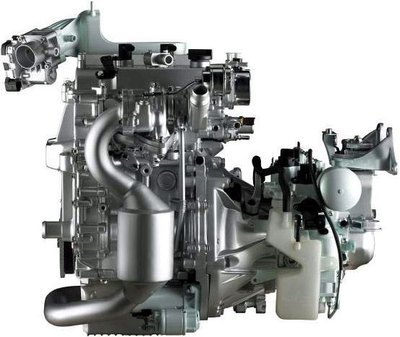


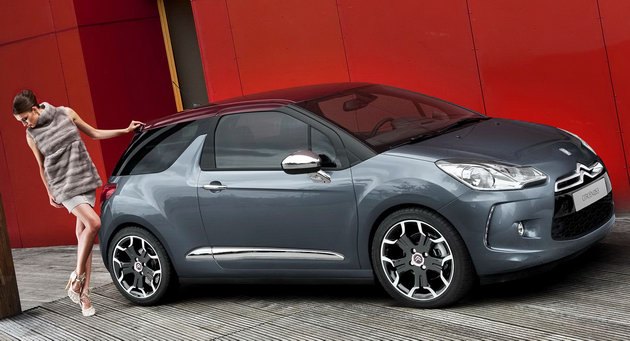
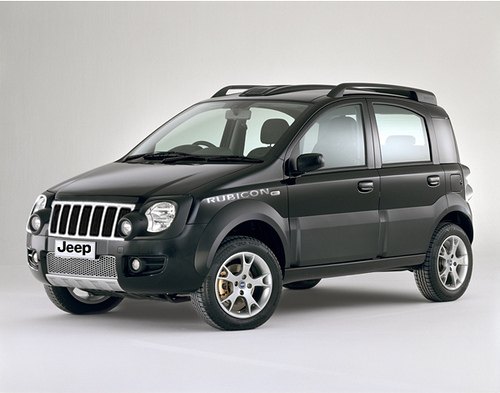


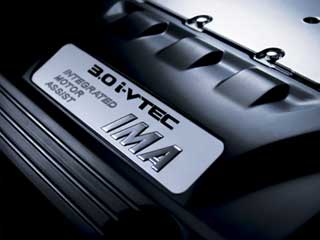


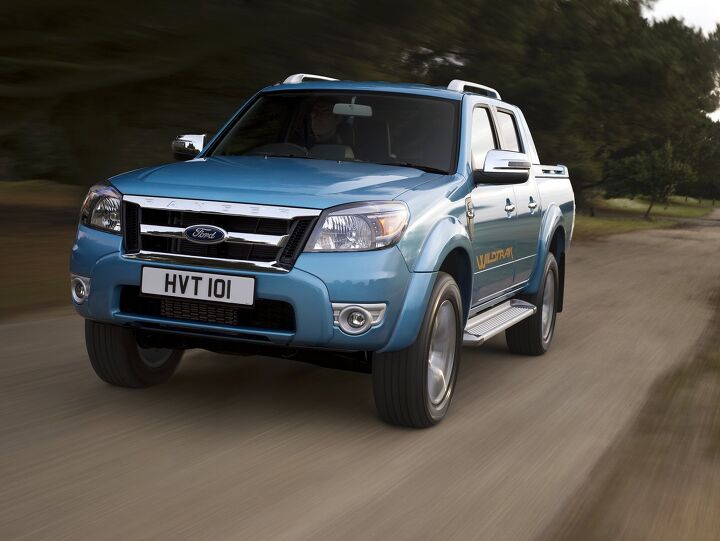


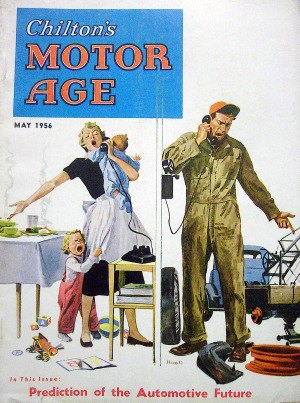
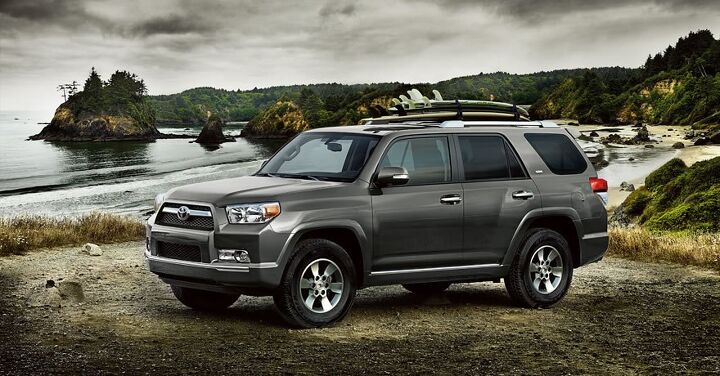
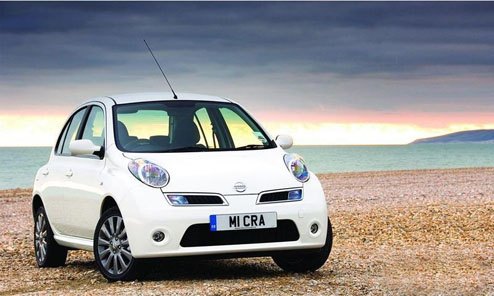





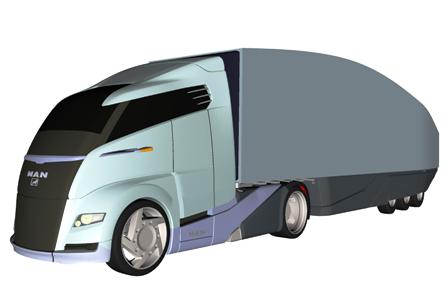
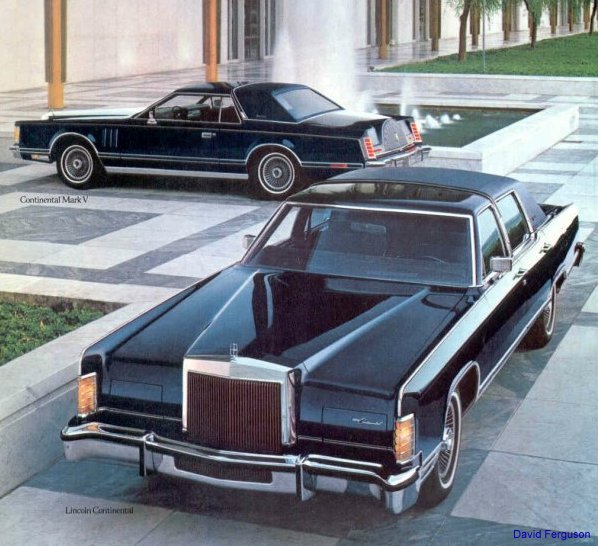
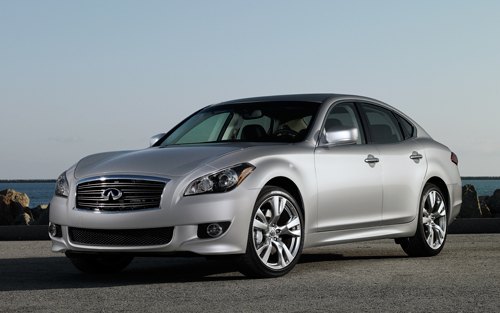
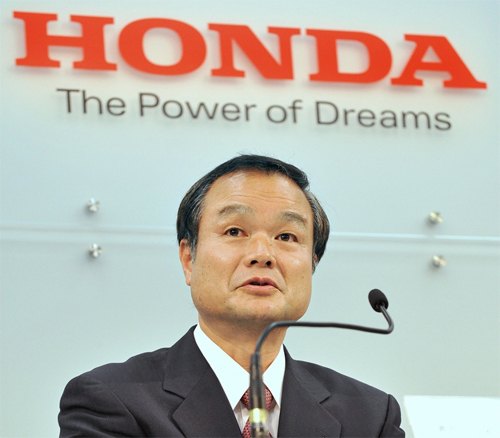
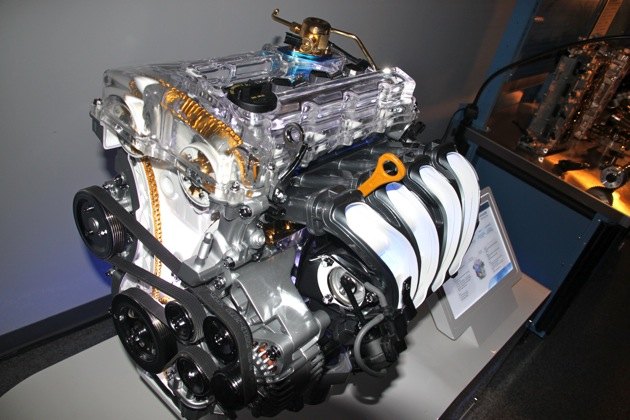
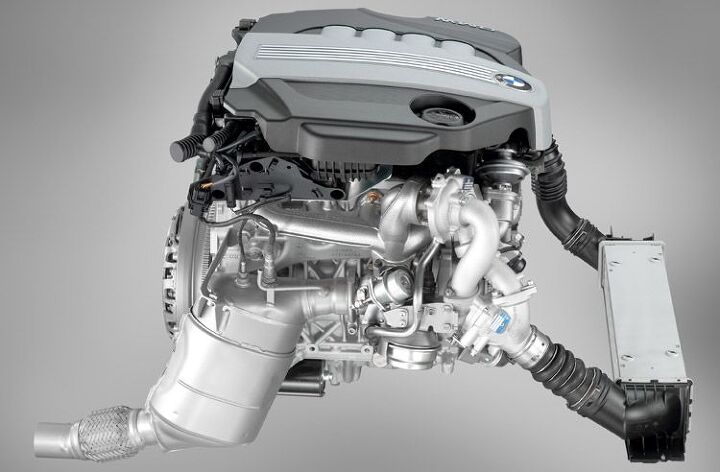
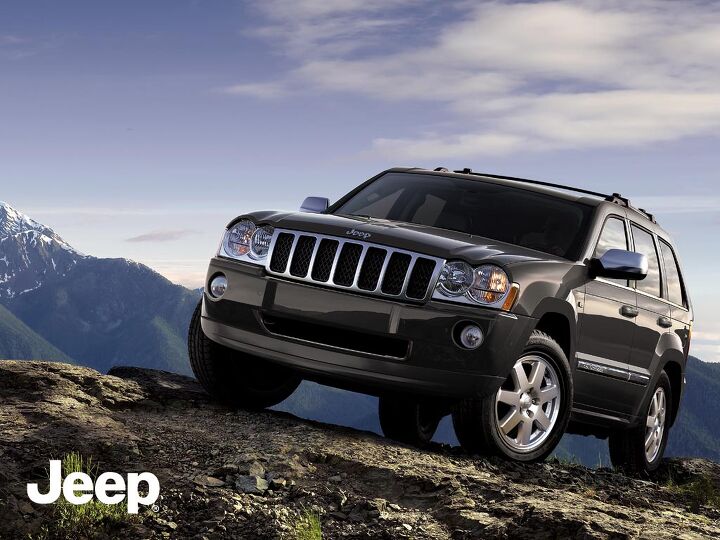
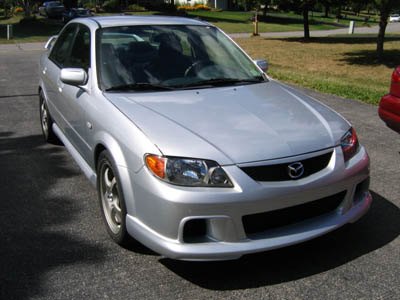

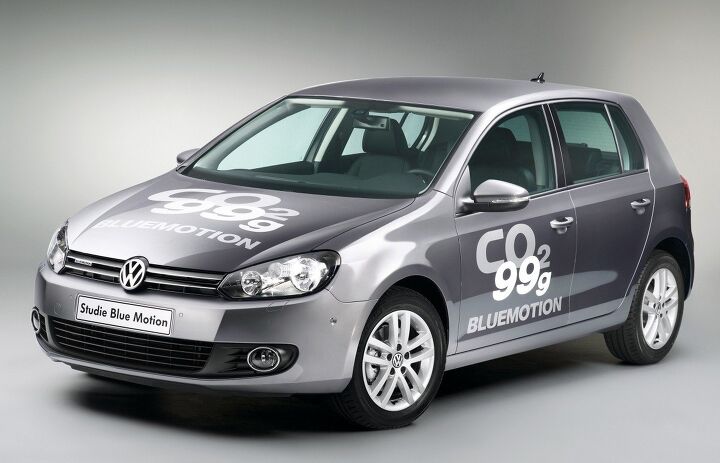

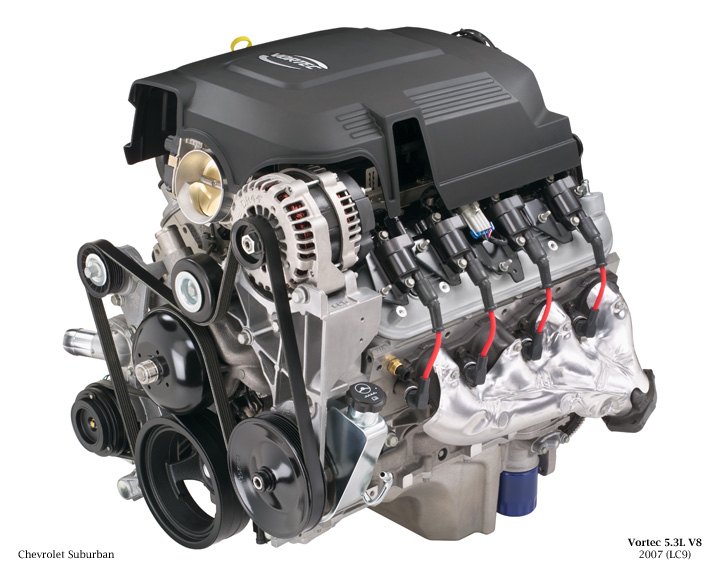
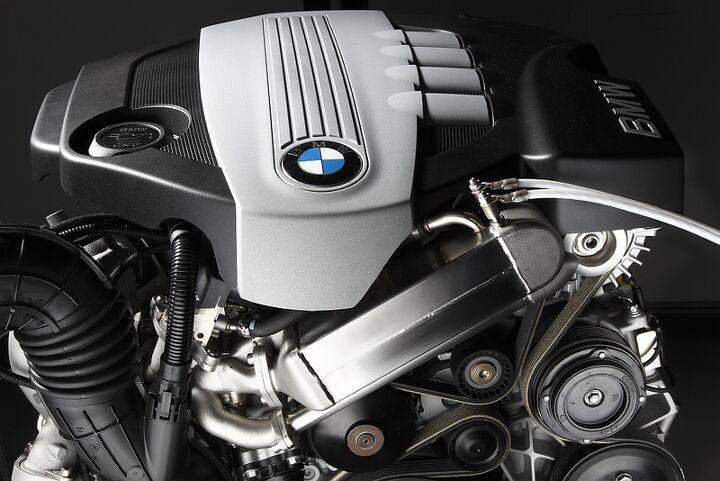
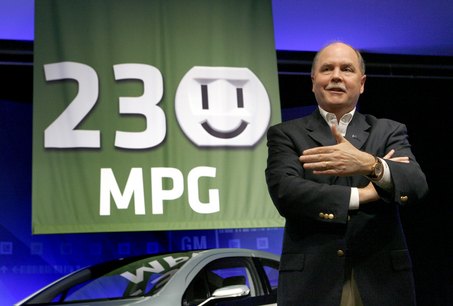
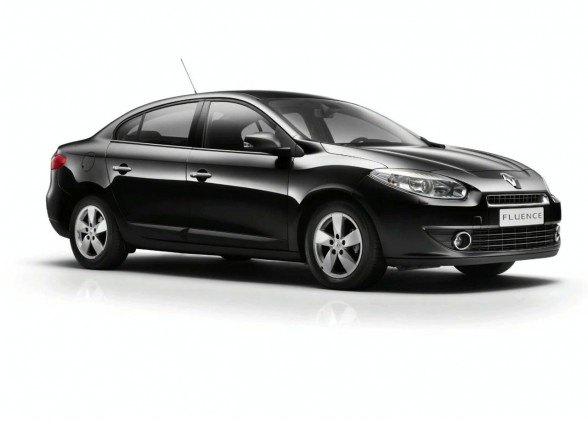

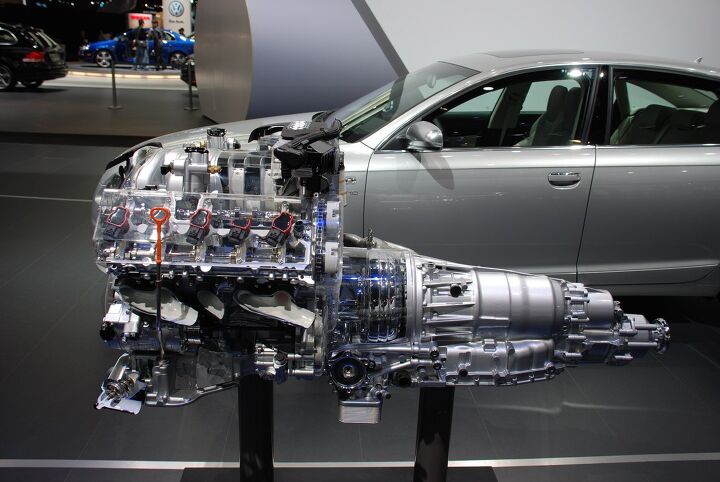


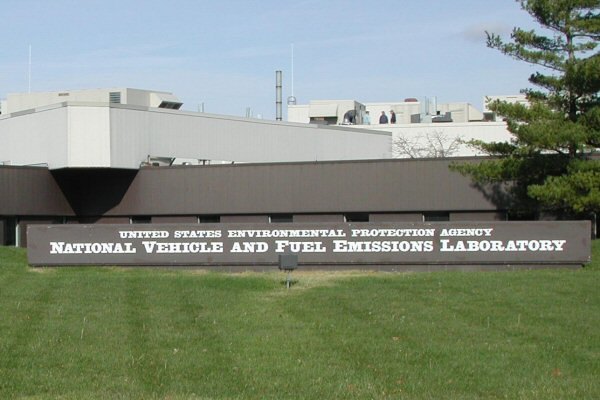

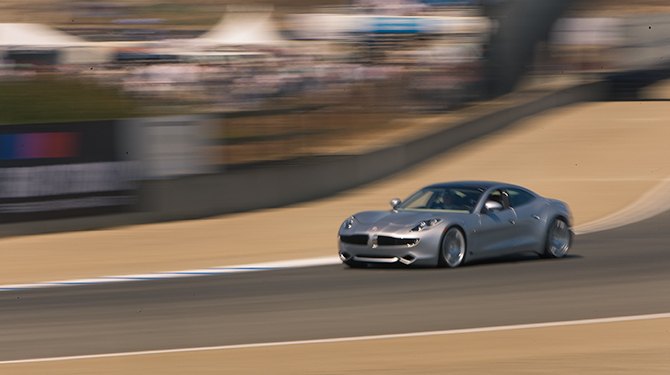
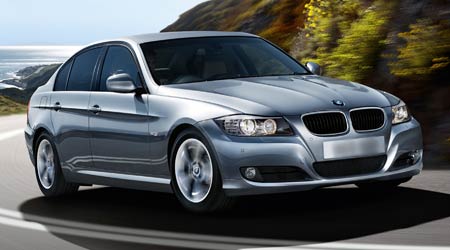



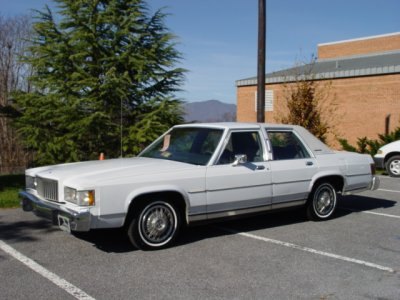
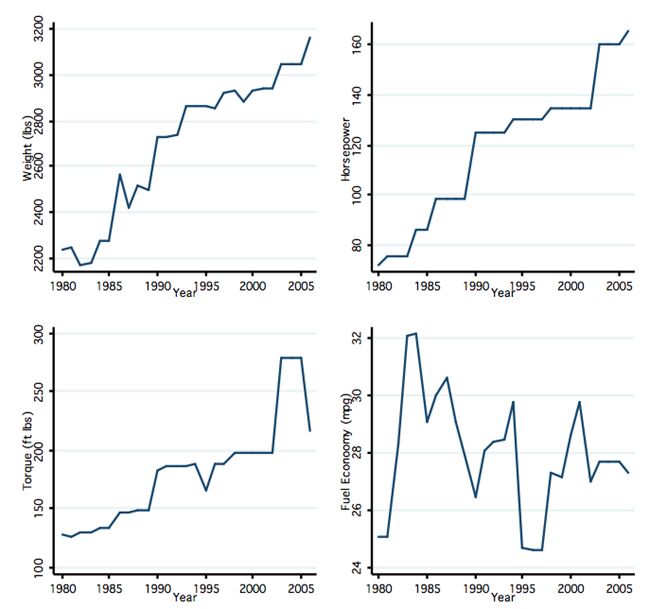


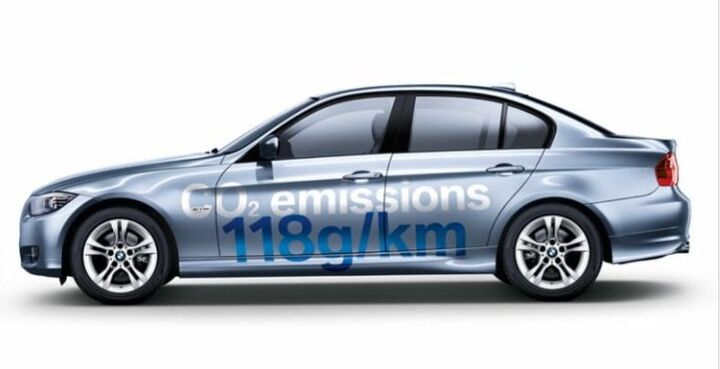













Recent Comments